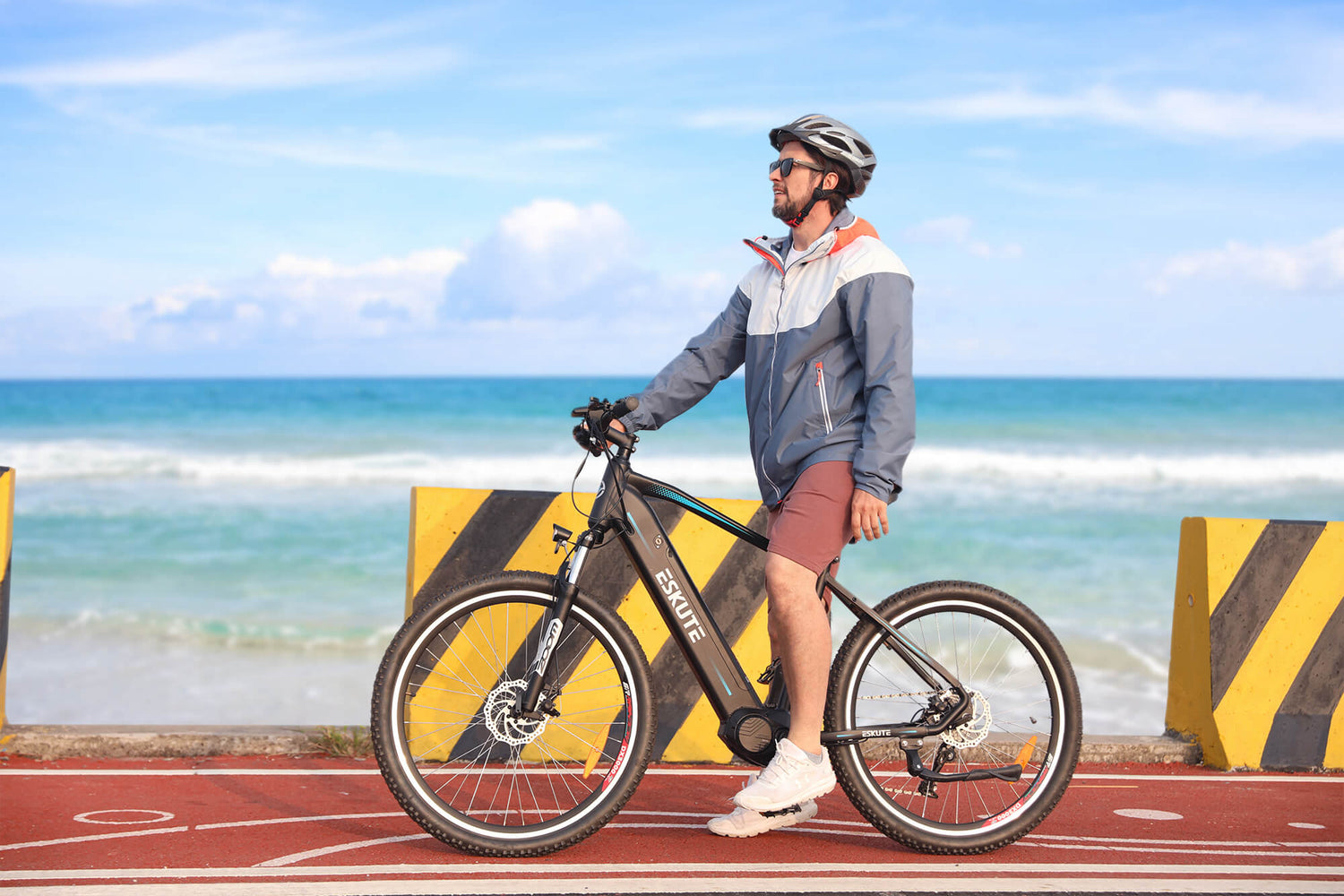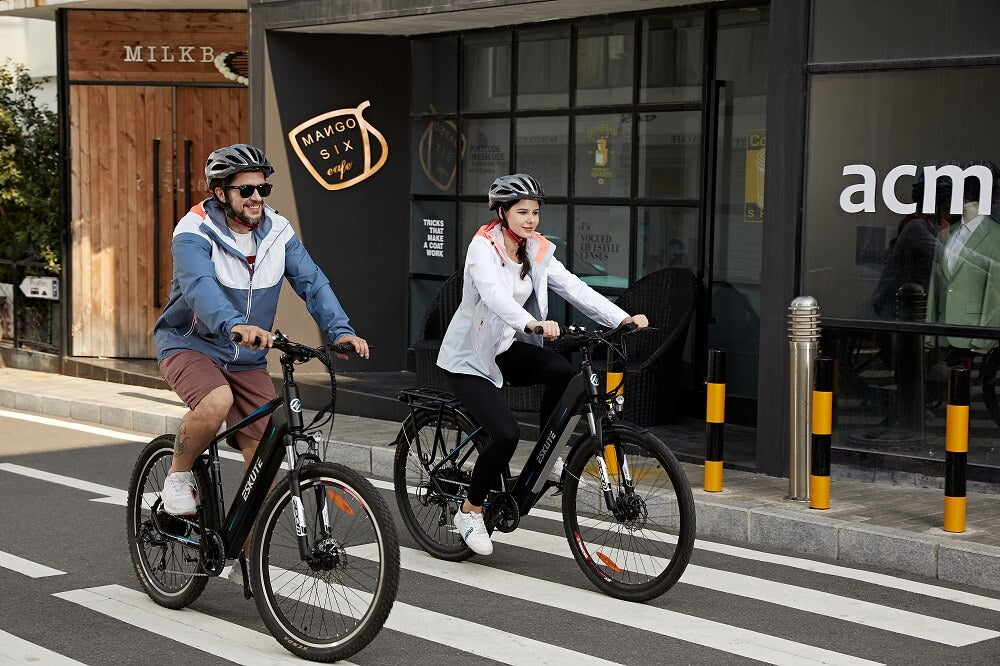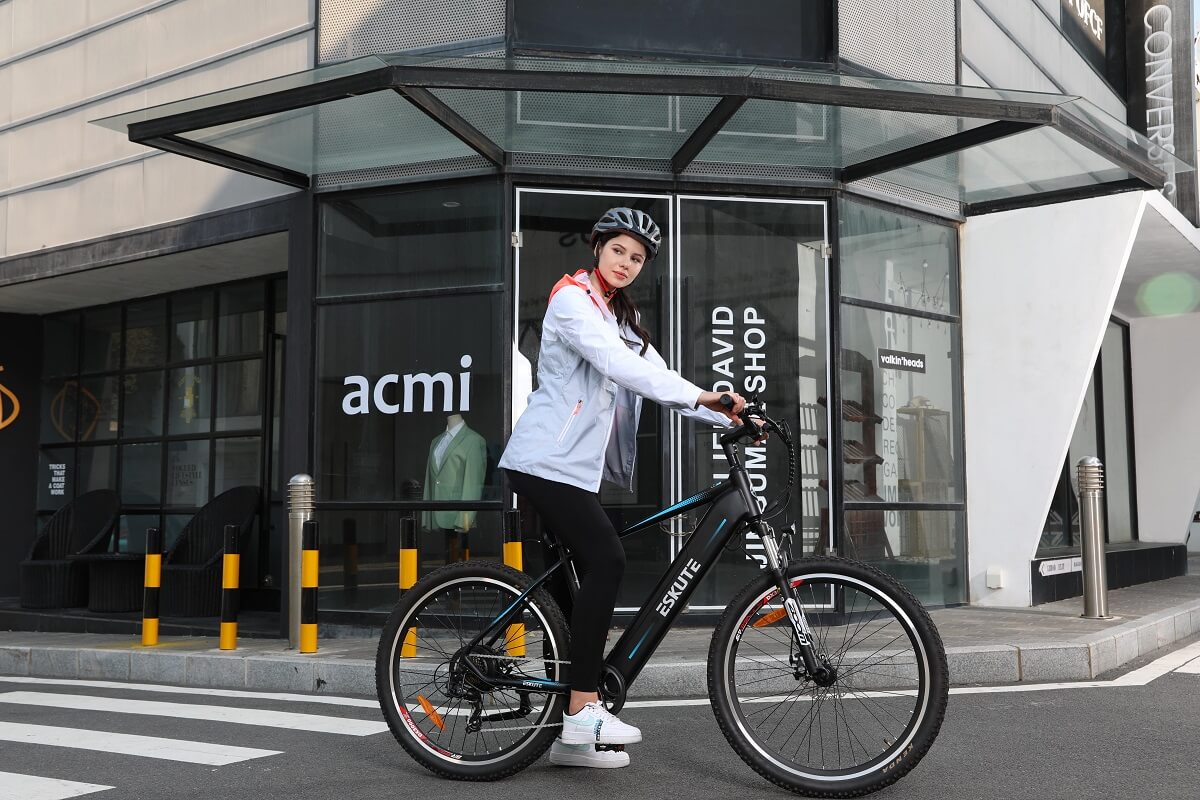Navigation
Electric bikes have become increasingly popular in recent years. E bikes provide a convenient, fun way to commute, making it easier to manage hills and high wind speeds, which might otherwise make cycling physically more challenging and far less appealing.
Many people find it easier to reach more incredible speeds on an ebike, and so you might wonder if riding an e bike puts you at greater risk of physical harm. Reassuringly, recent research has shown that this is not the case. The study, conducted in the Netherlands, found no significant difference between the injuries of those who had an accident when riding an e-bike, compared to those riding a conventional bicycle.
However, as with all sporting activities, there is a risk that physical problems might develop when cycling. In this article, we will explore how you can prevent and treat common injuries associated with riding an e bike.
What causes electric bike injuries?
Any bike crash could lead to serious medical problems such as broken bones or concussions. However, it is reassuring that your chance of injury is no greater on an e bike than on a traditional pushbike. Wearing a helmet that suits your head shape also helps to reduce the probability of biking-related head injuries.
As with conventional cycling, e bike riders may find they develop irritating physical complaints such as pain or swelling in the knees, sore wrists, or an aching back.
There are several common causes of electric bike injuries, but it is often easy to make adjustments to reduce the risk of physical damage occurring.

Incorrect riding posture
Everyone is different, and the riding posture that suits you may be different from someone else's ideal posture. The correct posture may depend on which e bike you have, your body shape, and how flexible you are. Finding the correct rider posture to suit you will help prevent injuries and make cycling feel more comfortable, make your breathing feel less laboured, and improve your cycling efficiency.
Although finding a comfortable posture is an individual pursuit, some key areas to consider.
-
Make sure that your bike is the correct size for your height.
-
Warm-up before you get on your bike.
-
Cycling should feel stress-free, so concentrate on relaxing your shoulders and keeping your elbows bent to reduce stress. This will also minimise the pressure your wrists are under at the handlebars.
-
Keep your spine in a neutral or natural position to feel comfortable leaning forward. Use your core abdominal muscles to support your back and relieve pressure on your shoulders and hands.
-
Line your knees up with your feet. Your knee joints shouldn't bow outwards, leading to knee pain and an inefficient pedal stroke.
Excessive exercise
Excessive exercise can put increasing strain on your muscles and joints. Using your bike regularly for long commutes, cycling intensively or partaking in additional physical activity can increase the chance of experiencing aches or pains.
If you notice knee pain, aching in your arms, or start experiencing shoulder or back discomfort, your muscles could be under significant strain. It can be tempting to continue despite these warning signs, but muscle strain will worsen if you ignore them. The great thing about an e bike is that you can use pedal assistance when you start to feel tired. Choose a high level of power assist and let the motor take over the hard work to avoid muscle strain.
If any discomfort persists, take a break from biking to let your muscles recover, and consider seeing a physiotherapist if the discomfort doesn't settle.
Unfamiliar area and lack of awareness of local safety protocols
Biking in an unfamiliar area often requires more concentration than cycling close to home. In your neighbourhood, the journey is easier as you may be more familiar with road layouts, quieter course options, shortcuts and likely traffic flow.
In a new location, you must navigate unfamiliar roads while assessing risks, including speed limits, traffic calming systems, cars and other cyclists. Accidents are more likely to happen at slower speeds, particularly in unfamiliar locations where you may be unsure of the route.
Before you set off, putting your route onto a bike computer or properly studying an online map beforehand can help you feel more confident about your journey. This process may also highlight cycle lanes that offer a safer, quieter route. Be sure to check if there are any calming traffic measures, such as cycling priority systems or bus lanes, that you can use to avoid heavy traffic.
The most common cycling injuries
Cycling is good for your health, but it can also cause aches and pains. This is because the common injuries that a cyclist might complain of tend to occur in the muscles or joints.

Knee Pain
Pain in your knees is most likely to occur at the front of the knee joint where the patella, or knee cap, rests. However, pain at the back of the knees can also be caused by pedalling.
Pain at the front of the knees, or anterior pain, may be caused by tightness in a large group of muscles called the quadriceps or quads. The quads run down the front of the thigh and attach to the patella.
Anterior pain can also occur if the iliotibial (IT) band becomes tight. The IT band travels down the outside of the leg from the hip, and when tightened, it pulls on the patella causing knee problems.
Conversely, pain at the back of the knees, or posterior knee pain, occurs due to pressure on the hamstrings and pelvis. Your body may compensate for this by changing your knee and leg position, but this may lead to back pain.
Icing the front and back of your knees, using a foam roller and stretching the calves can help to reduce knee discomfort, tightness or swelling.
Achilles Tendonitis
The Achilles tendon is the tendon that joins your calf muscles to your heel. Achilles tendonitis is the medical term for inflammation of the tendon, and it often occurs when biking on hills or regularly training intensively. Being aware of Achilles tendonitis is essential as this injury is harder to treat and may require you to stop cycling while the tendon recovers.
Armed with the knowledge from this article, if you develop ankle or lower-leg pain, you must remember that it is crucial to seek medical advice before continuing with cycling. This will help you decide if you should take a short break from your bike to aid in recovery.
Wrist/Forearm Pain
A common cause of wrist or forearm pain is the incorrect posture that is not set up correctly for your height or riding style. It would help if you didn't feel over-stretched or hunched when riding electric bikes to avoid serious injury.
If your bike fits well, speak to a specialist as there may be a medical explanation for any wrist or forearm pain, such as carpal tunnel syndrome.
Back Pain
Back pain is one of the most common complaints for cyclists. Fatigue in the leg muscles can put a lot of strain on the back muscles, leading to the wrong posture and an aching lumbar spine. Improving core strength, making sure that you stretch properly before riding, and checking that your bicycle fits you well will help you to avoid straining your back.

Tips to avoid injuries while riding electric bikes
We understand that you want cycling to feel fun and comfortable. Here we offer our best tips and explain how to prevent injuries while riding electric bikes.
Adjust crank length and saddle height
Crank length and saddle height affect how far your foot can stretch to reach the pedal. A shorter crank will reduce the chance of muscular problems, as it places less stress on the hips and knees. Short cranks are standard on electric mountain bikes, including the Netuno Pro, helping to avoid injuries associated with over-stretching.
Adjusting the height of your saddle will also be of benefit. Anterior knee pain is often caused by the saddle being too low and close to the handlebars. Pain in the knees can often be treated by resting for a few days and performing gentle leg stretches. If you have pain at the front of your knees, it is best to only return to your bike once you have increased your saddle height and fixed it further back on the seat post.
Posterior knee pain is often caused by a saddle too high and too far back. Firstly, take time to rest and stretch so that the discomfort resolves. Before you get back on your bike, lower your seat and move it forward to minimise the impact on the back of your knee.

Do stretches before and after riding
It is important to warm up before you get on your electric bike like any sport. Our tips for a warm-up include a small amount of cardio, such as jogging on the spot or jumping jacks, followed by effective stretching of your arms, legs and back.
As tempting as it might be to lock up your bike and get straight in the shower after a ride, cool down stretches are also vital to preventing muscle and tendon problems throughout your body.
Optimise your ride position
E bikes are designed to take the strain out of cycling. Therefore, it is vital that your electric bike fits you well and doesn't cause discomfort. Avoid injuries by carefully selecting a bike that fits your body shape and seeking advice to get it expertly fitted to you. Injuries related to an incorrectly fitted electric bike can easily be avoided in this way.
Reduce your risk of accidental injury
Using any bike or e bike can be associated with tendon strains or problems with muscle overuse. However, electric bikes can also be involved in accidents on the roads. Learning how to ride more safely will help to reduce the risk of accidental injuries and collisions.
Get used to lower speeds first
The Netuno offers strong support to get riders to where they need to go in comfort. The power within the motor means that you can reach a more incredible speed more quickly. Riding quickly is incredible fun. However, if you use an electric bike at great speed and are involved in an accident, you may sustain more severe injuries.
It would be best if you, therefore, got used to pedalling at a slower speed before cranking up the power to feel the boost from the bike. Once you are used to your bike, you can gradually and safely increase your pace. If you plan to ride at high speed, you must wear a helmet to protect your head.

Observe the highway code and ride courteously
Multiple users are on the road, so it is essential to be aware of other vehicles, cyclists and pedestrians. Observing the road rules will help keep you safe and ensure you legally use your e bike. Legal information and the highway code can be found online.
Ensure that you use arm signals, wear bright or reflective clothing, and use good quality bike lights when riding at dawn, dusk or in the dark.
Pay more attention to traffic
Sadly, bikes and e bikes are often overlooked by car drivers. Even if you have the right of way, it is important to pay careful attention to the traffic around you. To be sure that it is safe to advance, you should make eye contact with car drivers, particularly when negotiating turns or junctions.
Brake smoothly
Braking suddenly can increase the likelihood that an accident will happen. If you need to brake, try to do so smoothly so that other road users have time to react. Always use the brake situated on your rear wheel to prevent the bike from tipping forwards and throwing you off.
Final Thoughts
As an e bike rider, you can make many simple adjustments to adopt the optimum riding position and increase your safety on the roads. Furthermore, overuse injuries are less likely when using an e bike as pedal-assist allows a rider to exert less power when attempting hills or feeling tired.










Leave a comment
This site is protected by hCaptcha and the hCaptcha Privacy Policy and Terms of Service apply.